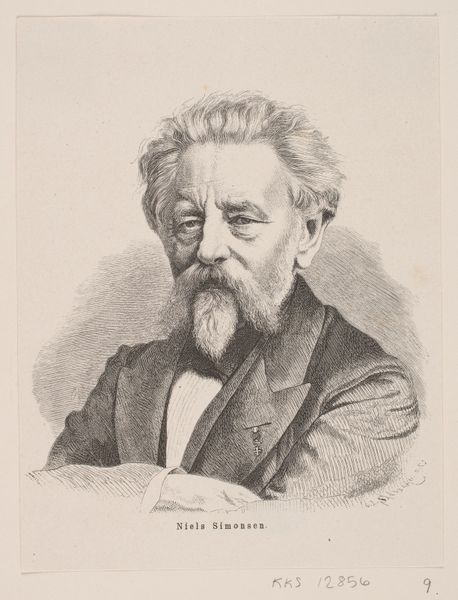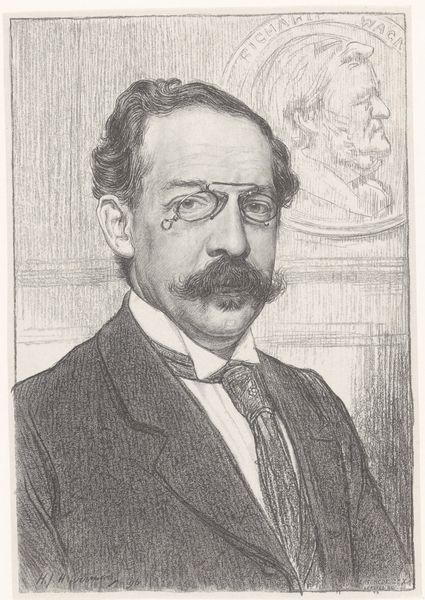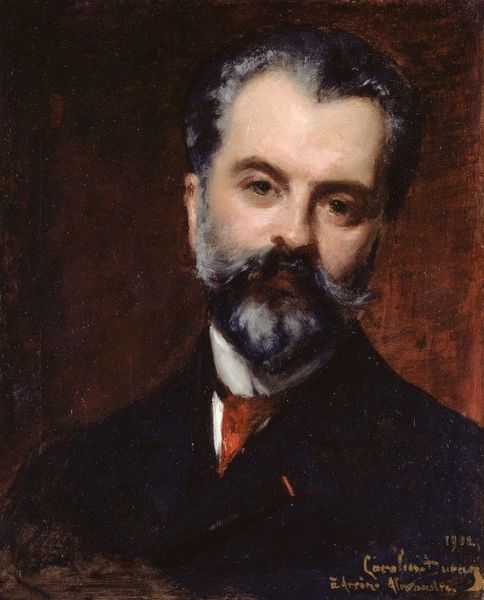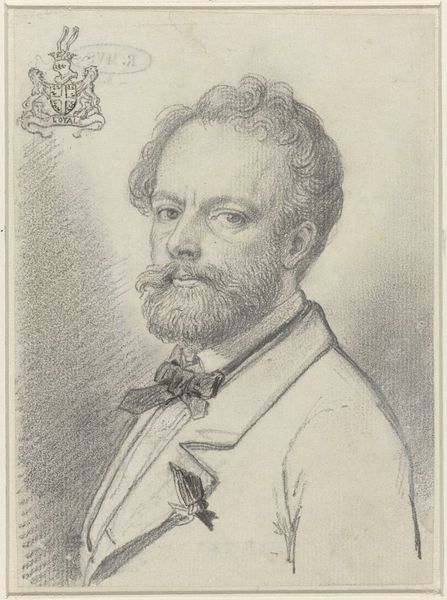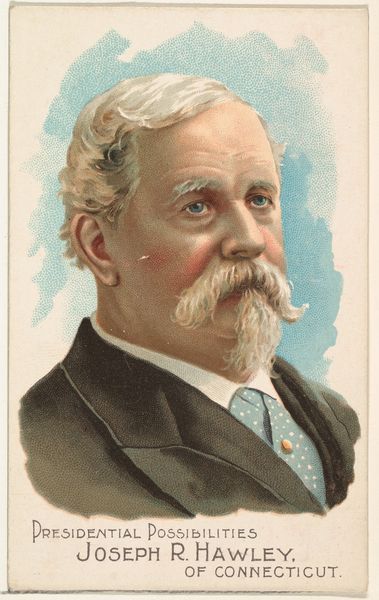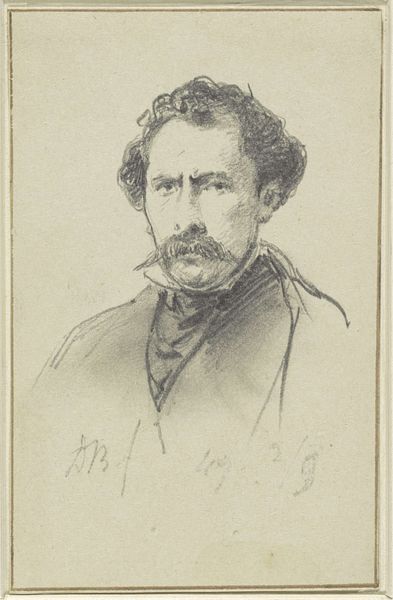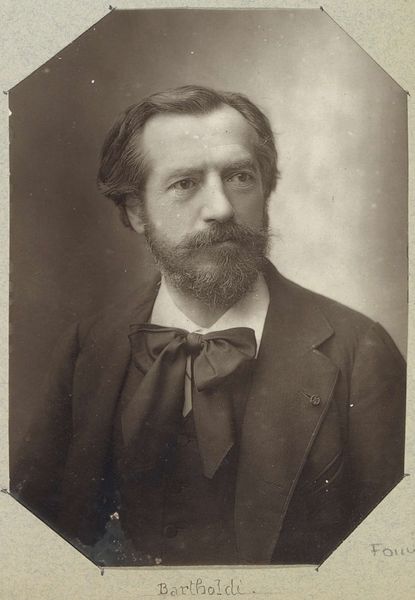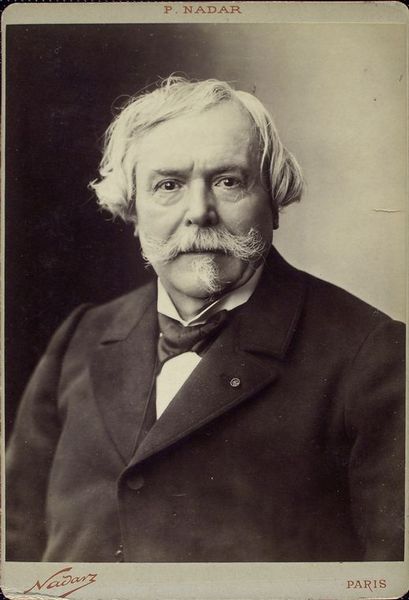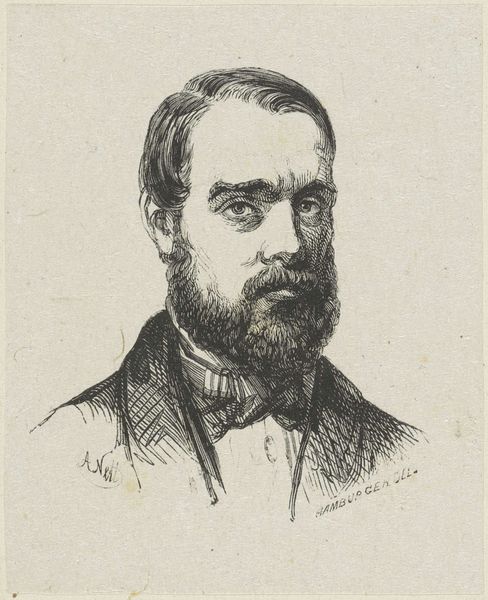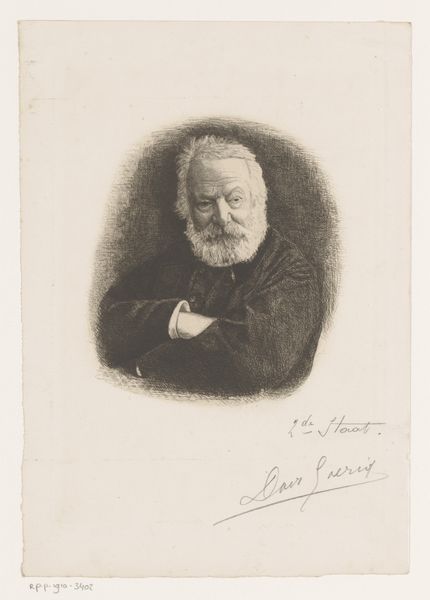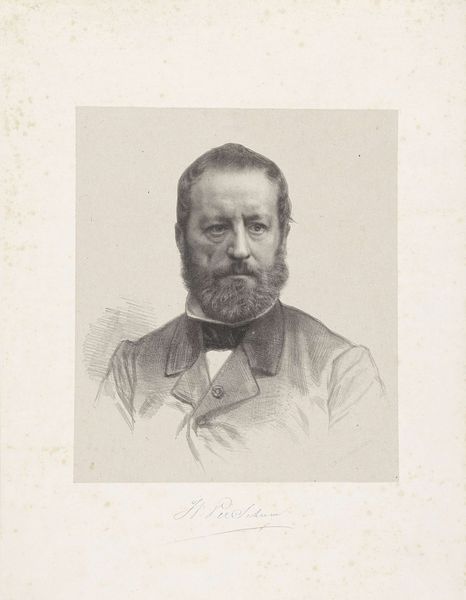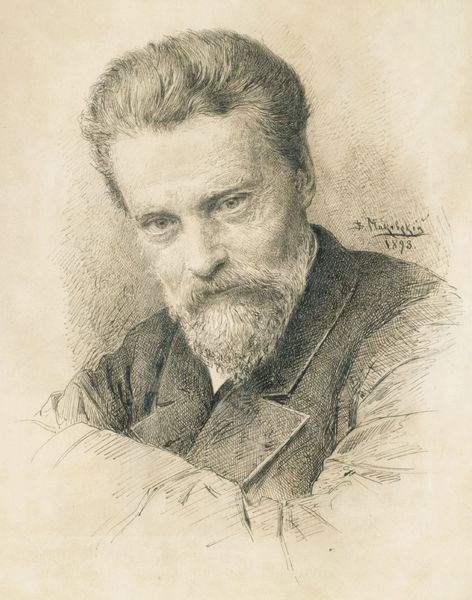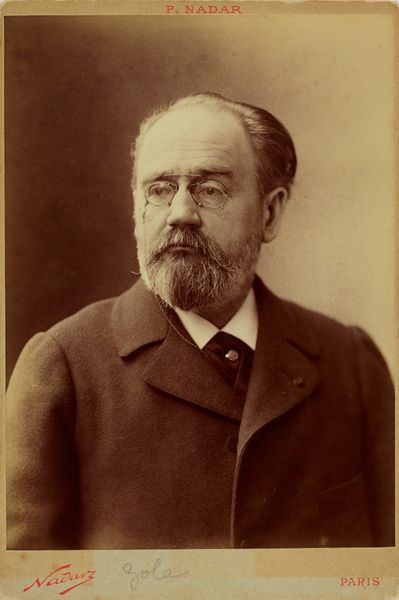
drawing, graphic-art, print, etching
#
portrait
#
drawing
#
graphic-art
# print
#
impressionism
#
etching
Dimensions: Sheet: 13 3/16 × 9 5/8 in. (33.5 × 24.5 cm) Image: 3 1/16 × 2 1/2 in. (7.8 × 6.3 cm)
Copyright: Public Domain
Editor: This is Félix Bracquemond’s "Portrait of Benjamin Fillon," an etching from 1876. I’m struck by the density of the lines; it almost feels like a photographic negative. How do you interpret this work? Curator: I see it as more than just a portrait; it's a snapshot of bourgeois identity in late 19th century France. Bracquemond, aligned with Impressionist ideals, captures Fillon not just as an individual, but as a symbol of the era’s intellectual elite. Look at the deliberate, almost scientific, approach to the etched lines – how might this relate to broader trends in French society at the time? Editor: Are you referring to the rise of positivism? Curator: Precisely! The etching medium itself, with its potential for reproducibility, democratized art, making it accessible to a wider audience. Consider how this challenges traditional notions of art ownership and exclusivity and makes way for new perspectives. The print also suggests how Fillon might see himself in relationship to society. Editor: I didn't think about the social implications of the etching process. The choice of medium really shifts the power dynamics! Curator: Exactly! The layering of meaning, the connection between artist, subject, and audience—these are the elements that ignite critical dialogues. This portrait compels us to look beyond the individual and engage with a network of historical, social, and cultural factors. Editor: This has definitely provided me with a new way to appreciate the artist’s purpose and medium! Curator: Indeed. It is crucial to unpack these contexts in order to broaden our historical view.
Comments
No comments
Be the first to comment and join the conversation on the ultimate creative platform.
